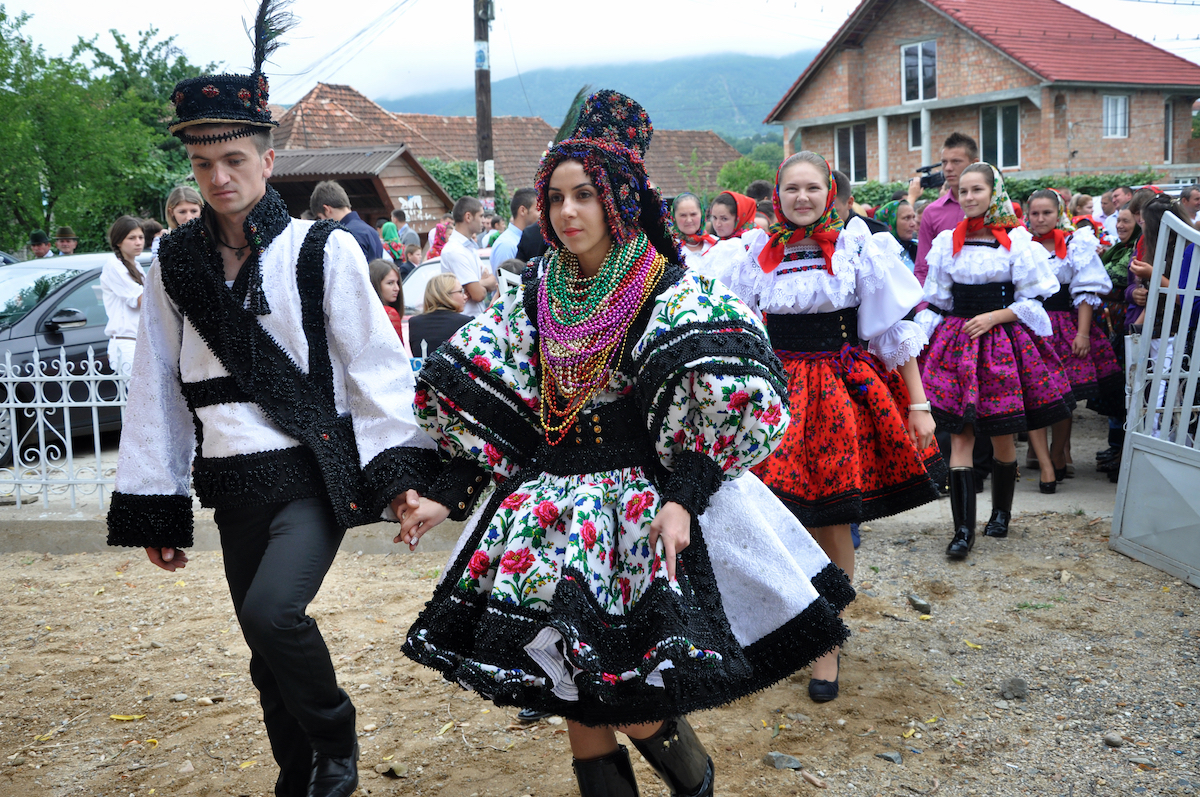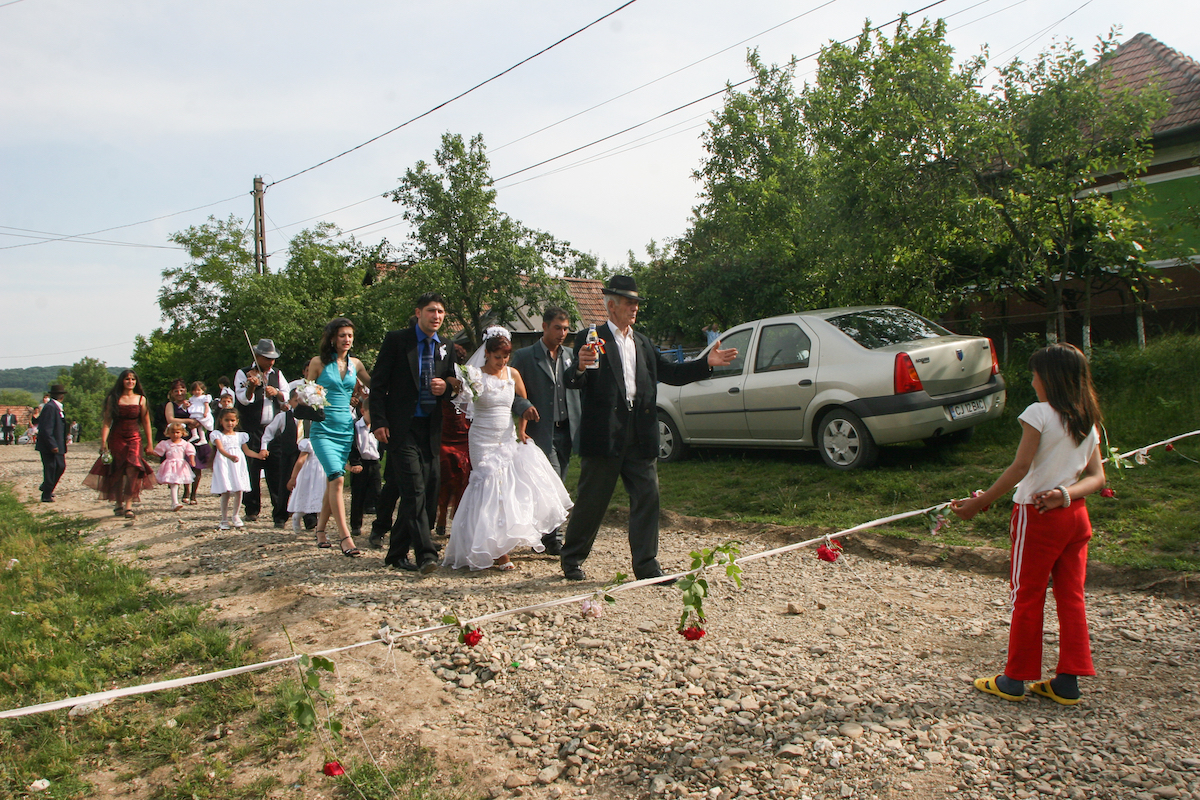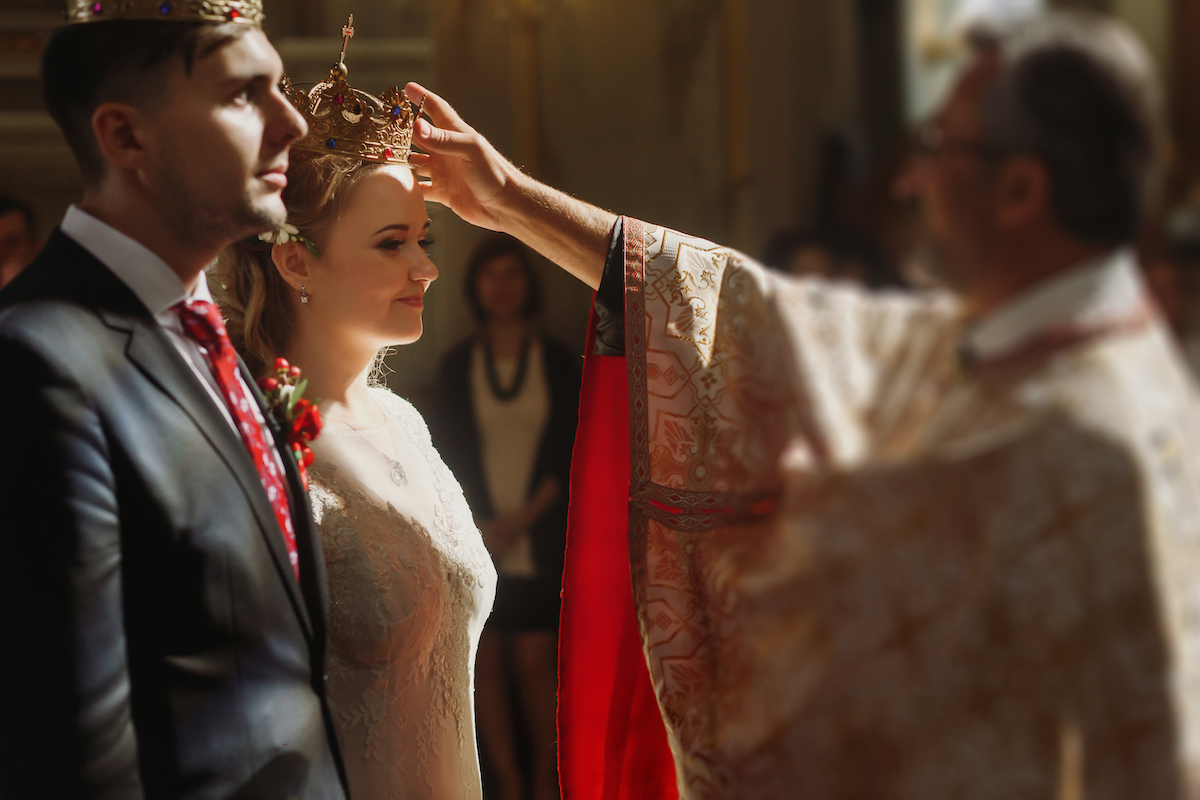Weddings in Romania, a step-by-step guide

Many say that getting married is one of the most important moments in a person’s life. And that’s something that definitely applies to Romania, where family is very important and where weddings are extremely important social events.
In Romania, traditional weddings are a world in themselves: they start early in the morning and sometimes end the next morning, passing through several important stages and taking the family to different places. The entire celebration is sprinkled with many traditions and customs. It all ends with a long party with music, dance and lots of food at small hours in the night. Here's the lowdown on weddings in Romania.
Old vs. new
There is a saying in Romania: Câte bordeie, atâtea obiceie (which would translate as Many houses, many customs). And this certainly applies to weddings in Romania, as the wedding traditions and customs differ from region to region and sometimes even from family to family. While the true traditional weddings (which are usually organized in villages or smaller towns) are still organized according to old customs, urban Romanians sometimes tend to make the event as simple as possible, while keeping some simplified traditions.

There are couples who live in big cities who still include traditional elements in their wedding day. In some regions, the bride and the groom choose to wear traditional costumes on their wedding day, and not the classic white dress and black suit. This has also become a new trend among young people who marry wearing the traditional blouses Ie, often choosing to have their official wedding pictures taken in the Village Museum - for those in Bucharest.
But most brides and grooms in urban and rural communities would stick to the princess-like white dress and the black suit for men. In smaller communities (such as villages or towns), the happy couple and their families are still the ones who organize the whole event themselves. Often, even the food is usually cooked at home, alcoholic drinks are homemade, and sometimes the party is organized in their back yard. Meanwhile, urban Romanians prefer to leave organizing the wedding to planners and hire restaurants to take care of the party.
Planning and logistics
While most young couples nowadays just decide to get married (after a romantic proposal, of course), in some communities the man still goes to the woman’s father to ask for his blessing. And this also involves serious talks between families on how the entire event will be organized. Only after that, the two lovers can go ahead with planning their special event.
Weddings in Romania usually take place on Sundays or Saturdays. Traditionally, it used to be Sundays but given that nowadays people are busy and most guests have to go to work on Monday morning, most weddings take place on Saturdays. There are several periods of the year when there are no weddings, namely during Lent, Christmas fast and several other smaller fasting period according to the Orthodox calendar (the majority of Romanians are orthodox). The busiest periods for weddings are, of course, the summer months.
Couples looking to have their wedding party at an events hall or restaurant need to plan ahead, as these venues are usually booked several months in advance. When they have the date, they can send start sending the invitations.
The happy couple and their families are not the only ones involved in the event. The godparents (nasi in Romanian) have a big role in all the planning, sometimes even a bigger role than the actual parents. The godparents are usually married couples, friends or relatives of the bride and groom. They are the spiritual parents of the happy couple, and their role in the entire wedding is very important, including financially. For example, they are expected to contribute financially to the organization of the wedding, they have to pay the tax for the religious ceremony and have important roles in the church ceremony. The godparents are also expected to be role models for the newlyweds and become part of their families.
How a traditional wedding unfolds
And now, the big day! It all starts early in the morning, and more often than not, the entire event ends the next morning, after a party with lots of dancing, eating and drinking. Does it sound like too much? Well, in some villages, there are still traditional wedding celebrations that last for three days and three nights. And music plays a very important part.
The groom starts the wedding day at home, with a very important tradition: the groomsmen get the husband-to-be ready for the wedding, and this also includes shaving him. However, nowadays this has become a more symbolic gesture, still kept because it represents turning the boy into a man. Then, they take their cars and go to the godparents’ house, usually accompanied by musicians.

The next stop of the merry group: the bride’s house. Meanwhile, at the bride’s house, the preparations start early as well, with the bridesmaids and the mother getting the wife-to-be ready for the wedding. They help her get dressed and then the godmother puts a veil on her head. Only after that, the groom can see his bride. However, it's not always as easy as that. In some rural areas, there's a custom that the bride stays hidden and the groom is tested by being offered another bride. Sometimes, the false bride is an old woman or a man disguised as a woman, to everyone's amusement.
Before leaving the bride’s house, the godmother and the mother break a traditional bridal cake over the bride’s head and give the pieces to the guests. It is said that this short ceremony brings good luck to the happy couple, as well as to all those eating from the cake. Another custom in some parts of the country is to block the couple's way and ask the groom for a "tax" before they leave the bride's house. This is done either by a child, who will block the door with a stick, or by a group of young men, who will block the road with a car or a carriage. The tax is usually something sweet for the boy or something to drink for the young men (either a crate of beer or several bottles of whiskey).
Traditional weddings in Romania have a strict processional order, which will be respected throughout the events to follow. The godparents stand by the couple's side, parents come next and then the other relatives and friends. The day continues with the civil ceremony, which takes place at the City Hall and is conducted by the mayor or another official of the municipality. Here is where the marriage is declared legal, the ceremony including the signing of the wedding certificate with the godparents as witnesses.
Not all wedding guests attend both the civil and religious ceremonies. Also, some couples get married at the City Hall well in advance to save time on the day of the actual wedding party. Regardless of when this ceremony takes place, it is not a long one, usually 15-20 minutes. When the newlyweds come out of the City Hall, their guests organize sort of a tunnel of love, holding flowers over their heads. In some areas, rice and grain seeds are thrown over their heads, as a symbol of richness.

The religious ceremony is next. In some smaller communities, the bride and the groom, accompanied by their families, godparents, and guests walk all the way from the house to the City Hall, then from the City Hall to the church, and then from the church to the party, making a merry convoy. The musicians are also accompanying them. However, more commonly, guests just show up at the church and the distances are covered by car. If there’s another wedding at the church when the bride arrives, the two brides avoid seeing each other, as this is believed to be a bad sign. It brings bad luck and people believe it means that the marriage would end with a divorce.
The religious ceremony, during which the priests read prayers and passages from the Bible, is usually long. And the guests remain standing during the service. The godmother stands by the bride’s side while the godfather stands next to the groom, both holding tall candles decorated with flowers. The godparents also help the bride and groom with the wedding rings. The ceremony usually follows a strict program. For example, at some point, the priest places the ceremonial crowns on the heads of the bride and groom, a gesture associated with the blessing of their marriage.
The ceremony ends with the traditional wedding dance around the Holy Table, sometimes followed by marriage advice from the priest. And, of course, with the newlyweds’ kiss. When the bride and groom go out of the church, the guests throw wheat and rice, as this is said to represent abundance and fertility. After each significant moment and ceremony during the day, there are a lot of kissing and congratulations, which makes the whole development seem even longer than it is.
The intermezzos are also opportunities to fix smaller or biggest problems that inevitably appear during the day or to just double check that everything goes according to plan. After the religious ceremony, especially in cities, the newlyweds take pictures next to symbolic monuments in their city, such as the Arch of Triumph in Bucharest or the Kissing Gate in Targu Jiu – among the most popular. While some decide to schedule the photo shoot after the religious ceremony, others do it in different days and even in different locations (at the seaside, in the mountains), to make sure they get perfect photos to help them remember this day for a lifetime.
The party - a long night of music and abundant food
Two things to remember when attending a Romanian wedding party: get a good night sleep the night before and be ready to eat a lot. Most wedding parties take up to ten hours and serve food and beverage throughout the whole night - with cake served at about 4:00-5:00 AM.
Guests usually start arriving at the venue around 7:00 PM. The couple, godparents and the newlyweds' parents are usually there to welcome everyone and get another set of kisses and congratulations. The party usually starts about an hour later (sometimes even more) with the happy couple’s dance, and then the family, godparents and the guests are invited to join them on the dance floor.

Starters are then served. Depending on how fancy the wedding is, these can be more traditional or sophisticated. Traditional starters usually consist of a selection of cold meat products and cheese, mini-quiches, canapes plus some vegetables (cucumber, tomato, sweet pepper, olives). Sometimes just the starter alone is enough to last for a whole day at the office. In countryside weddings, they also used to serve soup (ciorba) as a starter or first course, but that was when parties took place at home. At the restaurant, they rarely serve soup at a wedding these days.
The party continues with the first course, which is usually something lighter, such as fish. Then, after midnight, comes the main course. Now, depending on the wedding, there can be just one main course or a double one. The simple main course could be some sort of fried meat with vegetable siding. However, some people also serve their guests sarmale (cabbage rolls) before the steak. In this case, the sarmale come around 1:00 AM and the steak at around 3:00 AM.
The cake is usually served after 4:00 AM, after which the party starts to come to an end. In between the courses, there's also a lot of drinking and dancing. You can hear almost any kind of music at a wedding these days, from disco, pop and even rock ballads to manele, but one music genre that will always be there is traditional folk music, known as muzica populara. You will most surely have the chance to dance the hora, sarba and maybe also something called the penguin's dance (Dansul Pinguinului). El Meneaito is also still popular at Romanian weddings. So the music and food go hand in hand. If the music at the wedding is good, in the end you may not feel that you ate for three days in just one night.
Traditions during the party
There are also several wedding traditions kept during the party. Probably the most popular tradition is the kidnapping of the bride. At some point during the party, usually around midnight, a group of guests, usually men, kidnap the bride. But don’t worry, there is nothing dangerous, this is just another way of spicing things up a bit. Most brides kidnapped during the party are taken to a club or other fun place until the groom and the kidnappers agree on the ransom. This usually means that the kidnappers get a few bottles of whiskey, vodka or anything else they prefer. The groom or the godfather pay the ransom and then the bride returns safely to her new husband and the party continues.
Then, there’s the traditional ritual of becoming a married woman. At a given point during the party, the godmother takes the veil over the bride’s head and replaces it with a scarf. The change symbolizes the bride’s transformation from a girl into a married woman. The bride throwing her bouquet is another tradition.
It is customary for the guests to congratulate the newlyweds when they leave the party, which is the moment when they usually offer gifts to the bride and groom. However, nowadays, the newlyweds are offered money instead of gifts, handed to them in envelopes. The sum of money offered at a wedding varies greatly depending on the party location, the couple's social status and how close the guests are to the couple. Godparents and family usually pay the most, followed by close relatives and friends. Most guests want to make sure the money gift covers the cost of the food and service and then some.
The newlyweds usually pay for the wedding costs with money they receive from gifts, and many manage to use the extra for a bigger purchase, like a car or even a downpayment on a house.
Wedding superstitions
There are also several superstitions connected to this special day. For example, rain on the wedding day means good luck in marriage and wealth. If the bride cries at her wedding, it means she will be happy in her marriage. Meanwhile, it’s bad luck to get married in May, as it said that these marriages end fast. Divorce is also close if the bride drops her bouquet on her wedding day, some Romanians believe.
Have you ever attended a Romanian wedding? If you did and witnessed some special traditions you want to share, tell us about it in the comment box below.
newsroom@romania-insider.com
(Opening photo: Shutterstock.com)












